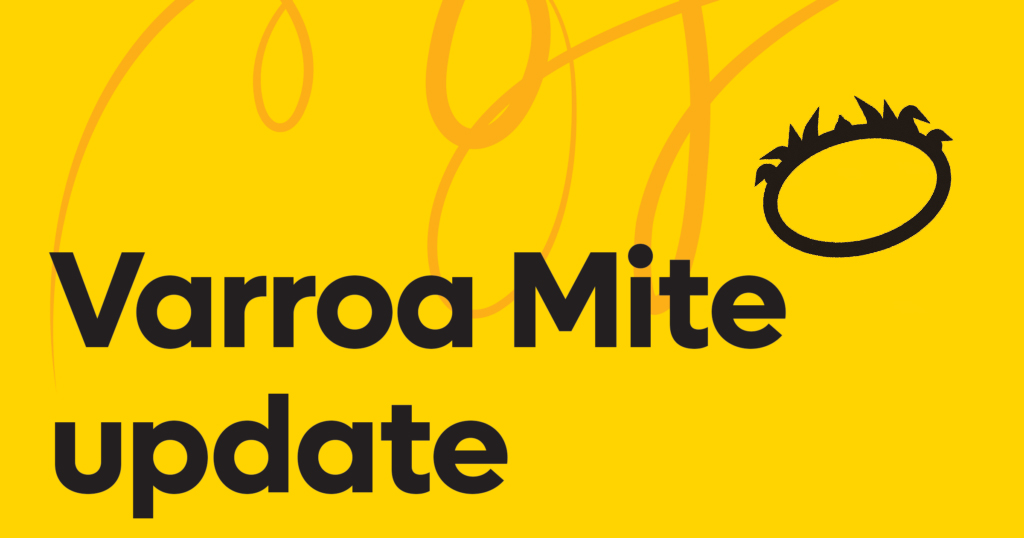AHBIC Industry Update 19 – 265 days of response
14 March 2023Varroa Response Update 9 New Detections There have been 9 new infested premises confirmed from NSW DPI Surveillance through laboratory diagnostics. This brings the total Infested Premises to 131. These […]

Varroa Response Update
9 New Detections
There have been 9 new infested premises confirmed from NSW DPI Surveillance through laboratory diagnostics. This brings the total Infested Premises to 131. These new detections are all located in the existing red and purple zones around the Hunter and Central Coast. More specifically in the areas of Glen William, Brookfield, Loxford, Sawyers Gully, Yarramalong, Woy Woy, Koolewong, Umina Beach and Horsfield Bay.
The Loxford and Sawyers Gully IP’s are well within the existing western Hunter RED zone.
Brookfield and Glen William IP’s will create a RED zone extension between the Vacy and Allworth RED Zones.
The Yarramalong IP was in the Central Coast PURPLE zone and now extends the RED zone and PURPLE zones north of the Central Coast area.
Four IP’s clustered together in Woy Woy, Koolewong, Umina Beach and Horsfield Bay to the south of the Central Coast area increase the RED and PURPLE zones to the south of the Central Coast area.

Beekeepers in Red Zones
It is very important that all beekeepers who have hives in the RED zones do not move them from their current location, if you haven’t already, please report hives and apiary locations to the DPI by filling out the online form at dpi.nsw.gov.au or calling 1800 084 881. DPI will make contact with registered beekeepers in the red zones to provide further information. Any beekeepers wanting to retain their hive ware in the recently declared red need to let DPI know as soon as possible.
DPI operations teams are continuing to work on completing euthanasia of hives from the RED zones with over 20,000 hives completed to date.
Beekeepers in Purple Zones
Bees and hives must not be moved out of the PURPLE zone, you must apply for a movement permit through the DPI before any purple zone bee or hive movement is made, DPI will conduct a risk assessment of the proposed movement and provide you with the details of the result.
A permit application form can be sought from the DPI website or by contacting Brett Kerruish brett.kerruish@dpi.nsw.gov.au or 0427 239 569.
All registered beekeepers in the PURPLE zone are required to conduct an alcohol wash at least once in every 16-week period, and report using the online form www.dpi.nsw.gov.au/alcohol-wash or via Hotline 1800 084 881.
DPI surveillance teams continue working through the required first round PURPLE zone surveillance, prioritising of this surveillance has revealed new IP’s but it is necessary work in delimiting the spread as we continue with the eradication of varroa. Registered commercial beekeepers can access Owners Reimbursement of Costs (ORC’s) payments under the agreed National Response Plan if they have hives within the PURPLE zone.
Beekeepers in Blue Zones
Beekeepers in the BLUE zone can only move their bees or hives if they fill out a hive movement declaration. (this is different to a permit).
A movement declaration form can be sought from the DPI website DPI website or by contacting Brett Kerruish brett.kerruish@dpi.nsw.gov.au or 0427 239 569.
All registered beekeepers in the BLUE zone are required to conduct an alcohol wash at least once in every 16-week period, and report using the online form www.dpi.nsw.gov.au/alcohol-wash or via Hotline 1800 084 881. Refer to the Emergency Order and the FAQ’s pages of the DPI Website for further details.
Wild European Honeybee Management
Of the 9 designated zones baiting is currently active in Newcastle(Awaba/Seaham/Vacy), Nana Glen, Narrabri and Denman RED zones and an efficacy trial is underway in the Wyong baiting zone. The new IP’s have extended the eradication zones and the baiting team will be seeking landholders to host feeder stations for prioritised deployment within the southern Central Coast area.
Volunteering to host a station greatly assists the Varroa emergency response as well as your community and Australia’s beekeepers. WEHBM Program team are looking for prospects in all zones if you are able to host a station please contact the DPI.
